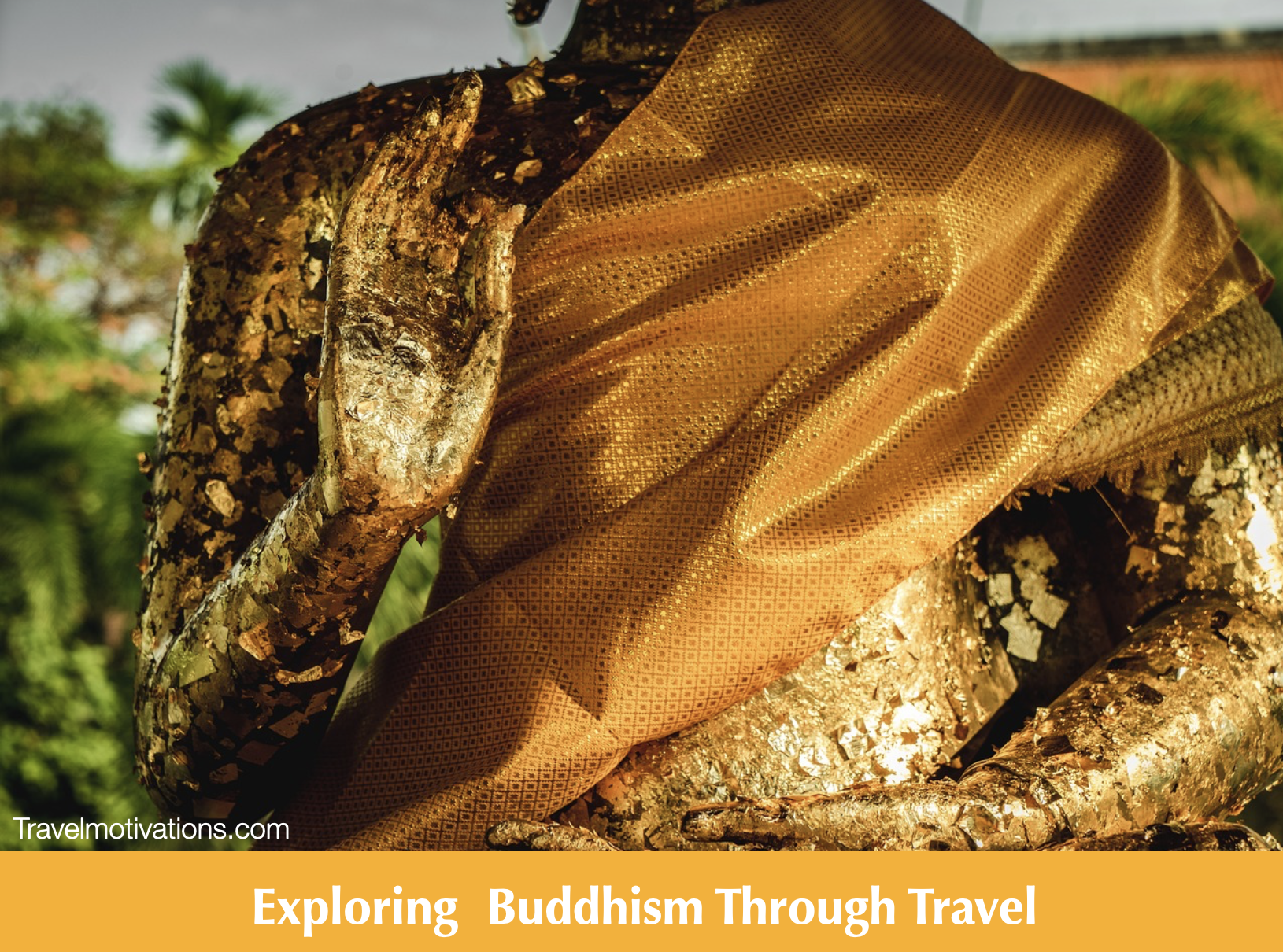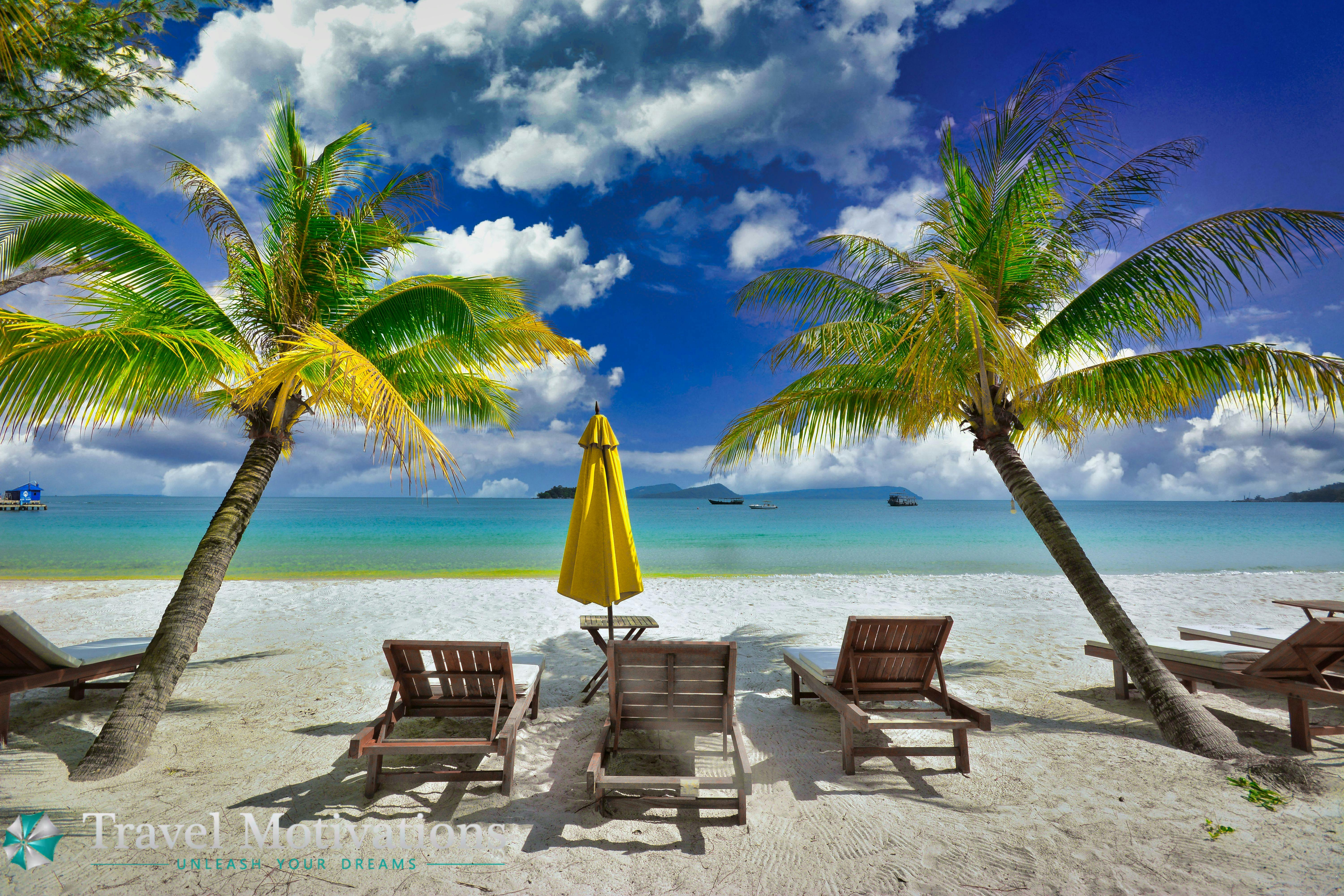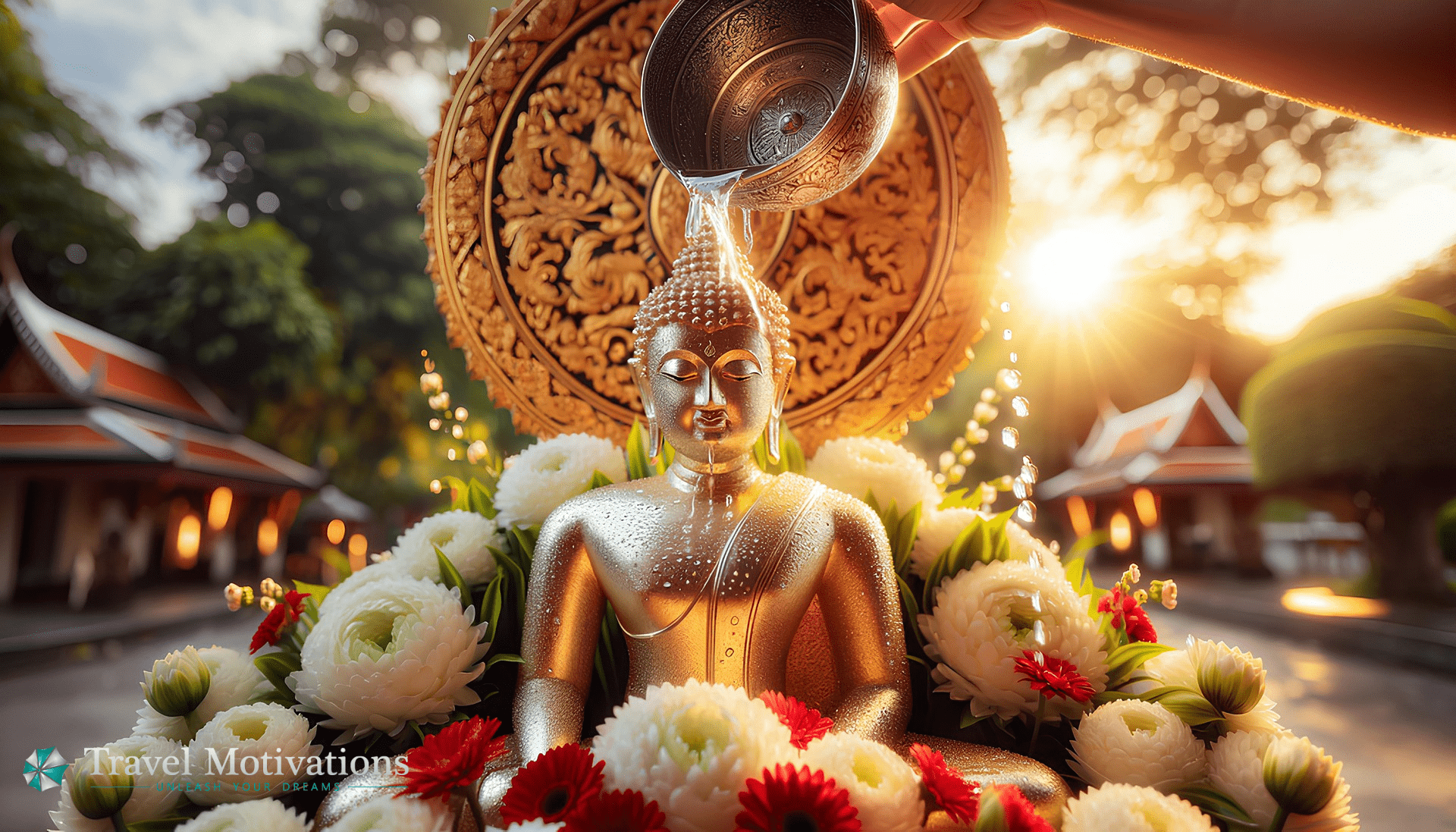Buddhism in Thailand is largely based on the Theravada tradition of Buddhism. Thailand is one of the largest Buddhist nations in the world, and nearly 95% of Thailand’s population follows Buddhism. For centuries, Buddhism has played an important role in the history of the kingdom and has enriched the lives of Thai people in all aspects. Buddhism in Thailand has also successfully been integrated with the local folk beliefs as well as Chinese religions from the large Thai-Chinese population.
History of Buddhism in Thailand
Founded by Prince Siddhartha, Buddhism originated in India in the 6th century B. He eventually achieved the ultimate goal of enlightenment. After 49 days of meditating under a bodhi tree, he became Buddha, or the “Awakened One.” Buddhism later arrived in Thailand from Sri Lanka. It became the dominant religion in both Thailand and Laos in the 12th century.
The development of Buddhism in Thailand has a long history. In order to go into detail about its history, it is necessary to divide it into three different key periods of time. These three time periods that we will look at include Theravada, from the Asoka period; the Mahayana period and finally, the Theravada from Sri Lanka. Siddhartha Gautama’s life accounted for his life discoveries, monastic rules practised, and path to enlightenment, which is followed by current Buddhists.
First, we will look into the period when Buddhism first started in Thailand during the Theravada from Asoka’s period. Buddhism was introduced and established by King Asoka in Patalilbutta City during the 3rd century B.C. King Asoka sent out monks out of the country to follow and learn about Buddha’s teachings. While other monks were learning the ways of Buddha, two monks stayed behind in Thailand to teach people there. During this period, the first signs of Buddhism were seen in Thailand and became very prevalent.
It became noticeable since the introduction of Buddhism in Thailand that these beliefs also started to spread to other areas of Asia during the Mahayana period. King Kanitsaka the Great had the intention of spreading Buddha’s teachings further than just his kingdoms. He began to send groups of monks throughout Central Asia in order to help spread the word. Once Mahayana’s Buddhism expanded into Thailand, it became widely accepted by the people there. Mahayana’s Buddhism spread from the southern regions to the north via the central areas of the country. This created a large multicultural society, with different dialects that still, today, inhabit the Thai language. The spread of the beliefs of Buddhism had officially begun in Thailand.
Buddhism in Thailand
The official religion in Thailand is Theravada Buddhism, practised by more than 95% of the population and by many who reside in Laos, Myanmar, and Cambodia. Small tokens of this religion are seen in the most inconspicuous of places around the country. Visitors will find daily reminders of Buddhism during their travels, from towering temples found along the Chao Phraya River to spirit houses protecting buildings and more across the country.
Buddhism is a key component of the identities of many Thais. Many people give daily offerings to things like spirit houses. Others sporadically feed the many soi (street) dogs to make merit. By making and gaining merit, many Thais believe they would live longer and happier lives. Some people also wear Buddhist amulets in order to protect themselves.
Buddhist temples
There are around 30,000 Buddhist temples in Thailand. Some of the most well-known temples, or wats, in the Land of Smiles include Wat Phra Kaew in Bangkok as well as Wat Phra That Doi Suthep in Chiang Mai. Many Thais prefer to spend Buddhist holidays around these stunning, architectural wonders. In addition to being a place of worship and celebration, these temples often house monks, and schools, and act as gathering places for locals. Many temples feature markets just outside of their grounds, and Wat Pho (Temple of the Reclining Buddha) even has a massage school on its grounds.
A few noteworthy temples In Thailand for witnessing divinity and creativity are :
1. Wat Pho (Temple Of Reclining Buddha) – Wat Pho is popular as the Temple of Reclining Buddha. Apart from the shrine of Reclining Buddha the complex houses several other shrines including a prayer hall, giant chedis (stupas) and galleries housing 1000+ Buddha statues, more than any other temple in Thailand.
2. Wat Phra Kaew (Temple of the Emerald Buddha) – Wat Phra Kaew, popular as the Temple of the Emerald Buddha is arguably the most important Buddhist temple in Thailand. But it is not a Buddhist monastery as neither monks nor nuns use the temple complex as their residence or primary place of congregation. Instead, Wat Phra Kaew was once the private chapel to the kings of Thailand and members of the court. Today, like the Grand Palace in Bangkok, Thailand, where the temple complex is located, it is open to the public. The temple or Wat was completed in 1783 under the patronage of King Rama I to enshrine the Emerald Buddha (Phra Kaew) for which it was named.
3. Wat Phra That Doi Suthep – Wat Phra That Doi Suthep is one of the sacred and most important temples in Chiang Mai, Thailand. The structure is an incredible piece of architecture and skilled craftsmanship. It was built early in the 19th century. A sacred place for the Thai people, this Wat Phra That Doi Suthep temple is marked by seven-headed serpent statues that line the 306 stairs. Once one reaches the terrace of the temple, the view from the top is absolutely enthralling.
4. Wat Pa Phu Kon – Wat Pa Phu Kon is situated within the area of the Na Yung-Nam Som National Forest Reserve at Ban Na Kham Yai, Tambon Ban Kong, on the seam of 3 provinces; namely, Udon Thani, Loei, and Nong Khai. The temple was formed out of the realisation of a number of Buddhists in the contribution as well as benefits of the nature and watershed forests, which were gradually being degraded. They also wished to follow in the footsteps of the late King Rama IX in keeping forests fertile. So, they sought permission to use a piece of land within the Na Yung-Nam Som National Forest Reserve as the location to build Wat Pa Phu Kon. Wat Pa Phu Kon is a peaceful place suitable for monks to practise meditation and mental development. The temple’s image hall, surrounding pavilions and buildings on the hilltop are of fine Thai architectural design. The image hall in the applied Rattanakosin art has 3 entrances and enshrines a white marble Buddha image in the posture of entering Nibbana named “Phra Phuttha Saiyat Lokkanat Satsada Maha Muni”. The 20-metre-long reclining image features exquisite Buddha’s marks and was constructed on the auspicious occasion of the 7th Cycle or 84th Birthday Anniversary of H.M. the late King Bhumibol Adulyadej in 2011.
5. Wat Tham Suea (Tiger Cave Temple) – The famous Tiger Cave Temple, or Wat Tham Sua, is for sure one of the most adventurous tourist attractions in Krabi. Particularly, this sacred site is exceptional as it has an exceedingly steep and sweaty ascent with 1237 steps. The effort is rewarded with an outstanding view over Krabi’s limestone rocks. But also, the main “Tiger Cave” and the “wonderland” rainforest, are very interesting and worth seeing. A visit to this sacred place is a unique experience and one of the top things to do while in Krabi.
6. Wat Arun Ratchawararam Ratchawaramahawihan (Temple of Dawn) – Wat Arun Ratchawararam Ratchawaramahawihan or Wat Arun is a Buddhist temple in Bangkok Yai district of Bangkok, Thailand, on the Thonburi west bank of the Chao Phraya River. The temple derives its name from the Hindu god Aruṇ Deva, often personified as the radiations of the rising sun. Many consider Wat Arun one of the most beautiful temples in Bangkok and so a visit is highly recommended. This temple is considered to be the most famous and photographed temple in Bangkok, which features a soaring 70-meter-high spire decorated with tiny pieces of coloured glass and Chinese porcelain.
7. Wat Benchamabophit Dusitwanaram (Marble Temple) – Wat Benchamabophit Dusitvanaram is a Buddhist temple in the Dusit District of Bangkok, Thailand. It is also known as the marble temple, it is one of Bangkok’s best-known temples and a major tourist attraction. It typifies Bangkok’s ornate style of high gables, stepped-out roofs and elaborate finials
Travel Motivations provides Luxury Concierge Travel which is an exclusive Luxury Concierge and Lifestyle Management Service, with a dedicated team to design bespoke personal experiences and implement them on your behalf as your heart wants them to be. They step into your life and do all the things you do not have time to do and save the most important thing for you – Time.
If you are planning to experience Buddhism as a journey while visiting different places in Thailand, we would make arrangements for the necessary components of Travel (Hotels, Villas, Jets, Experiences). We would assist you in the process of Ticketing and Travel that would let you enjoy a memorable trip to the kingdom of Thailand.









